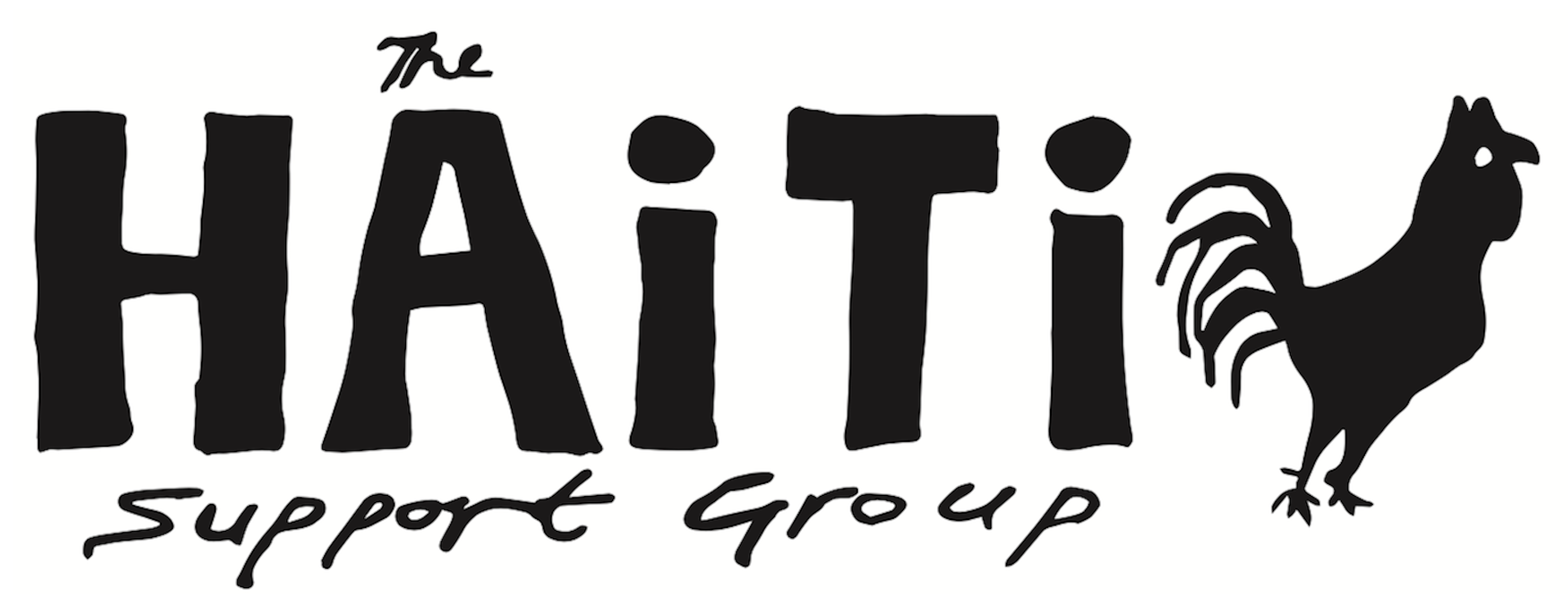Three artists from the Haitian capital, Port-au-Prince, have been making a big impact during a month-long visit to England. Jean Hérald Celeur, André Eugène, and Frantz Jacques Guyodo – known collectively as the ‘Sculptors of Grand Rue’ – have thrilled audiences with their dramatic creations assembled from rusted vehicle chassis, car tyres, steering wheels, oil filters, brake drums, and other discarded items.
The Sculptors of Grand Rue (a street that runs through the centre of downtown Port-au-Prince) were originally invited to England to help launch their massive ‘Freedom Sculpture’, a work commissioned by the Museum of Liverpool and the British development organisation, Christian Aid, to mark the 200th anniversary of the abolition of the slave trade in the UK.
The launch took place of 26th February but then, when the British solidarity organisation, the Haiti Support Group, provided some funding, they decided to stay on in London for a few more weeks. The Haiti Support Group’s Leah Gordon provided them with accommodation and found them a temporary workshop in east London. There the sculptors created new works from discarded items found in the streets nearby.
They also shared ideas with a number of internationally-respected artists also working on the same studios, including Cat Barich and Tania Stanic who this summer are due to show at Documenta – one of the world‘s most important exhibitions of modern and contemporary art which takes place every five years in Germany. “The best memory that we take back with us is of all the friendly British artists and musicians who we have met and worked with here”, said André Eugène.
The new creations assembled at the Hackney Wick studios – together with some smaller pieces that they brought with them from Haiti – went on display for two weeks at the end of March at Hoxton’s trendy bar and gallery space, The Foundry. The exhibition space was offered to them after the centre’s joint owners, Jonathan and Tracey Moberly, had read an article and seen photos of the sculptors’ work in the monthly arts magazine, Dazed & Confused.
During the show at the Foundry the artists took part in a performance of drumming to commemorate the abolition of the slave trade in Britain, and spoke at length on the Foundry’s own radio programme on Resonance FM. Tracey Moberly said, “It was splendid and symbolic to be marking the abolition of the slave trade by exhibiting Haitian artists, and the atmosphere was particularly electric on the day and the evening of the 25th of March when the artists and their friends performed Vodou drumming.”
She added, “The Foundry looked fantastic because the artists, as well as showing their Haitian sculptures inside, had decorated the outside of the building with sculptures and paintings. Everyone that passed by photographed the building’s exterior. By hosting this exhibition we were hoping to dispel the negative myths surrounding Haiti and it’s religion, Vodou.”
At a Haiti Support Group reception for the sculptors at Four Corners arts centre in Bethnal Green, a full house watched a UK-premiere screening of the short film about them – ‘E.Pluribus Unum’ directed by Maxence Denis – and later quizzed the artists about their work and experiences in Haiti.
There was also a very positive audience response when the sculptors showed the same film and participated in ‘Illusions of Disempowerment’ – a six-day festival of documentary films and talks on activism from the Global South, organised by the Solidarity Not Charity organisation.
The sculptors were also invited to give a talk and show their film to masters degree students studying film arts at the Chelsea Arts College, one of the most prestigious institutions of its kind in Britain. There was a considerable turnout of students to see the film and take part in a question and answer session afterwards. Later, the students showed the artists around their studios. Jean Hérald Celeur remarked, “We have no real arts facilities like this in Haiti.”
Dr John Cussans, lecturer in fine art theory at the Chelsea Arts College, suggested, “There should be always a fine and delicate negotiation between the British arts scene and art produced in the South, and this visit has helped further the ongoing debate.”
The artists themselves also took in a lot of the culture and art on offer in England. They found time to visit the Tates Modern, Britain and Liverpool; the Hayward; and the British Museum, and many of the new contemporary galleries in London’s East End. “I am so surprised,” said Guyodo, “There are no galleries in Haiti that would take a risk and exhibit work of this kind.”
Reflecting on the visit, Leah Gordon said, “This has been a great chance for the cross-fertilisation of ideas about art and creation – many artists and students have been quite intensely inspired by their work and culture, and I feel that the artists have benefited from their unique snapshot of the British arts scene.”
Gordon added, “Gone are the days when we can want – or expect – Haitian artists to be ‘naïve outsiders’. It’s important that all artists experience a wide spectrum of artistic influences.”
The impact of the Sculptors of Grand Rue will continue to be felt around the country as their ‘Freedom Sculpture’ – a mass of burnt-metal bodies, arms and hands – will be going on show in various locations before returning to Liverpool where it will remain on permanent display in the new International Slavery Museum that opens on the 23rd August.
David Fleming, director of National Museums Liverpool, said “This remarkable sculpture is an important work of art in its own right, but it also symbolises the links between the historic transatlantic slave trade and contemporary issues of freedom, enslavement and global inequalities. It is fitting that its permanent home will be in the International Slavery Museum, due to open on the anniversary of the revolution which created Haiti, the world’s first independent black republic.”
More: An Urban Museum in Haiti

